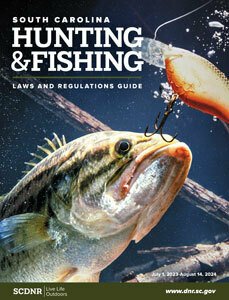Aquatic Invasive Plants & Animals
What are Aquatic Invasive Species?
- Non-native organisms that lack natural predators or disease that help keep their growth in check. These species typically reproduce rapidly and negatively impact waterways and native aquatic organisms.
Aquatic Invasive Species Laws
- Anyone caught spreading nuisance aquatic weeds, intentionally or unintentionally, can be fined up to $500 and/or imprisoned.
- Except for research or under a permit, it is not lawful to possess, sell or place into any waters many water plants including hydrilla, water hyacinth, water lettuce, giant Salvinia, and any other plant on the state or federal Noxious Weed List.
- Except bait lost incidental to fishing or fish released into the waters from which they were taken, it is unlawful to intentionally release any aquatic species, regardless of the stage of its life cycle, into the waters of this State without a permit from the department. It is unlawful to use any nonindigenous fish as bait that is not already established in the water body being fished except the following minnows: fathead minnows, golden shiners, and goldfish, including 'black salties'. A person who is guilty upon conviction of either of these may be fined a minimum of $500 and/or 30 days in jail.
- A person may not possess, sell, offer for sale, import, bring, or cause to be brought or imported into this State or release anywhere in this State the following species at any stage of its life cycle: carnero or candiru catfish, freshwater electric eel, white amur or grass carp, walking catfish, piranha, stickleback, Mexican banded tetra, sea lamprey, rudd, snakehead, rusty crayfish and other nonindigenous species. SCDNR may issue special import permits to qualified persons for research and education only. A person violating this provision may be fined a minimum of $500 and/or 30 days in jail.
- It is unlawful to take, harm, or kill grass carp from public waters. Any grass carp taken must be returned immediately to the water from which it was taken. Anyone convicted of doing so may be fined a minimum of $500 and/or 30 days in jail. Sterile grass carp may only be sold, purchased or possessed under a SCDNR permit.
What You Can Do to Help!
- Remove any visible mud, sand, plants or plant fragments from your boat, wading gear, clothing and or fishing equipment before leaving a water body to prevent transporting any potential hitchhikers.
- If you are moving your boat between lakes and rivers within the state or from different states, please have your boat and trailer pressure washed before putting it in the next waterbody, ensuring that all nooks and crannies are cleaned. Even a small piece of vegetation can become a big problem.
- Eliminate all water from your motor, live well, boat hull, gear and clothing.
- Don’t dump your bait bucket! Dispose of live bait properly in a trash receptacle or on one’s compost heap. Not only is it illegal, but live bait introduced into a system even if the live bait is native can introduce disease to an aquatic ecosystem.
- Dispose of shrimp parts and oyster shells properly. Shrimp heads and shells need to be disposed of in the trash and not thrown in the water because non-native shrimp parts can also spread disease. Oyster shells can be taken to a nearby recycling facility.
- Wading gear can be cleaned by either allowing it to dry 100% and remain dry for 5 days before using it again or dip the gear in a 3% bleach solution, rinsed well and allowed to dry thoroughly. Instead of a bleach solution, anglers can instead soak waders in a 100% vinegar solution or a 1% salt solution for 20 minutes.
- Pets allowed to swim should be rinsed, towel dried and brushed well after each fishing or wading trip.
- Never release plants, fish or animals into a body of water unless that is the water body from which they came.
Taking time to prevent the spread of aquatic hitchhikers will help assure the resources are protected from harmful, exotic species and save millions of public and private dollars in control costs!


